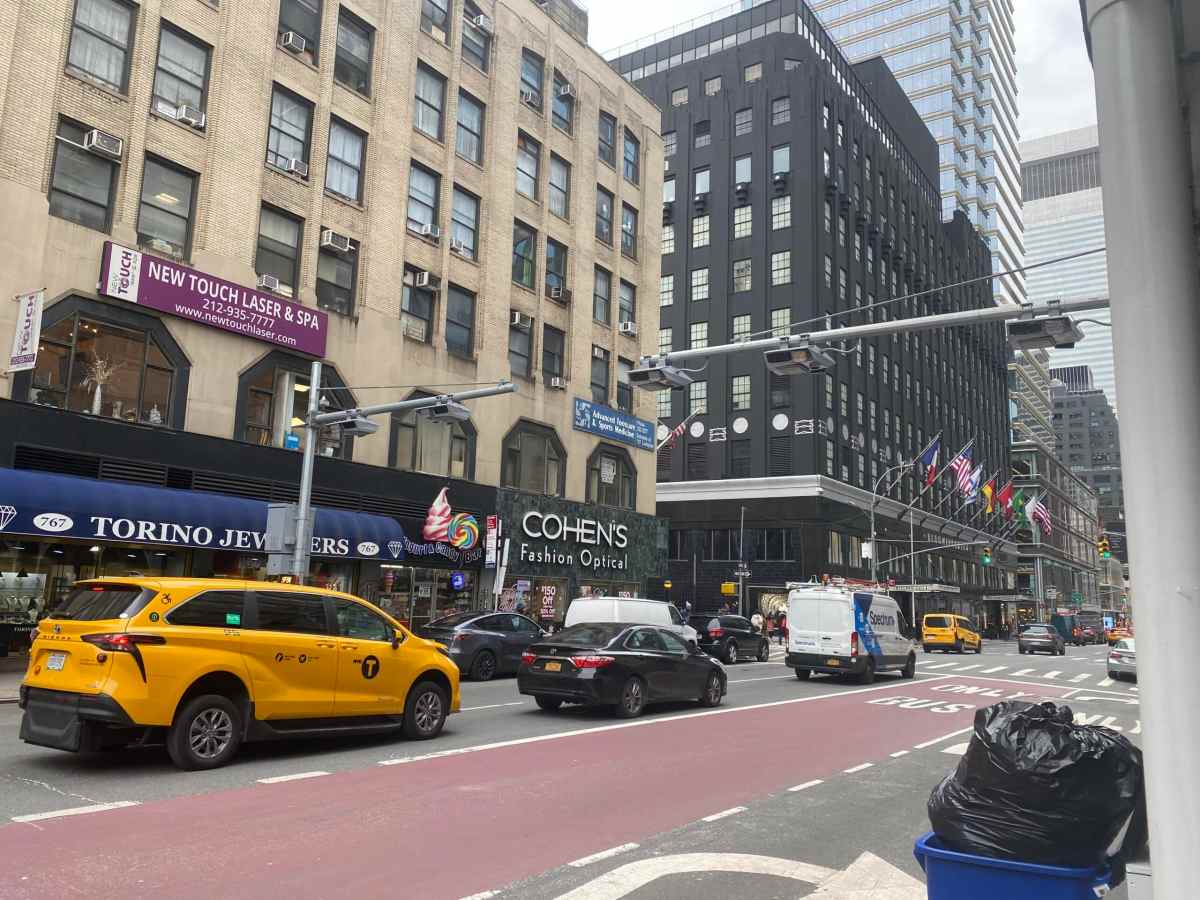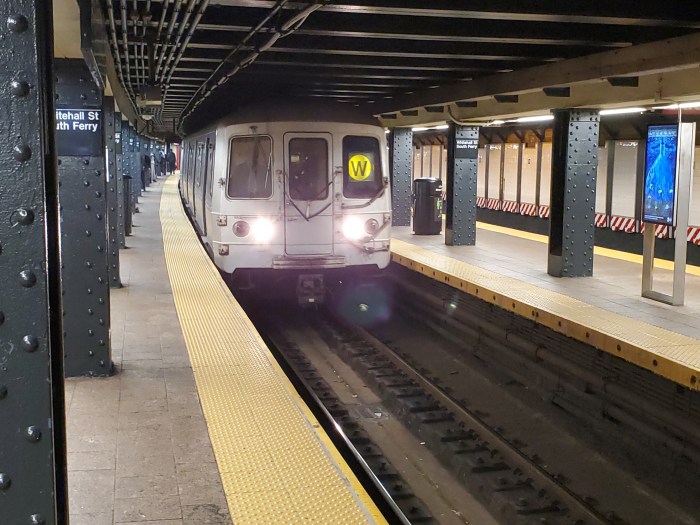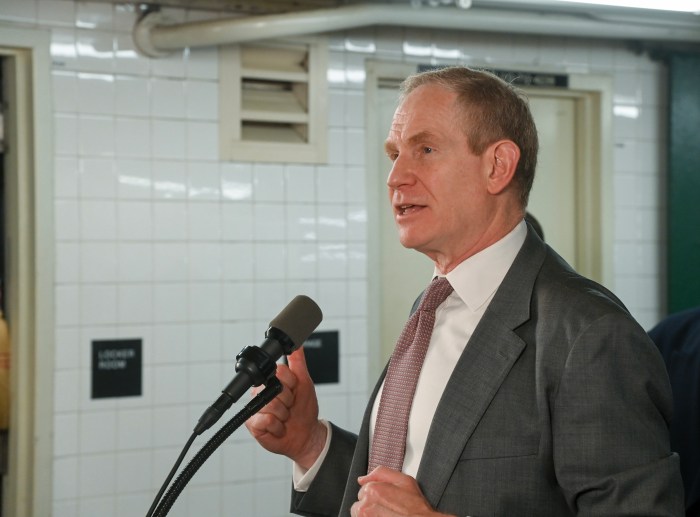The MTA is nearly finished installing the infrastructure to collect tolls under its upcoming congestion pricing program, the transit agency announced on Wednesday.
Workers have installed 104 out of the 110 gantries it anticipates using to levy tolls on motorists entering Manhattan south of 60th Street, under a program officials hope to have rolling by June, agency brass said at its monthly MTA Board meeting on Feb. 28.
The gantries are a mix of brand-new infrastructure and repurposed existing poles. They’ll be located at points of entry on the northern border of the congestion zone, between 60th and 61st Streets, as well as at the Manhattan end of bridges and tunnels and exits from the FDR Drive. The gantries will also be preceded by signs warning drivers they are about to enter the “congestion relief zone.”
The near-completion of the infrastructure means the MTA can soon start testing their gizmos to ensure they are properly calibrated. The readers must be able to differentiate between a wide variety of vehicles, levying different tolls based on size, and properly register discounts if applicable. They also must be able to capture both front and back license plates and read E-ZPass tags.
Under the program, most motorists entering the congestion zone will be charged a $15 toll, with larger costs for trucks and smaller ones for motorcycles. Discounts will be applied overnight, to crossings on already-tolled bridges and tunnels, and for low-income drivers. In addition to reducing traffic and carbon emissions, the plan is intended to raise significant revenue for the MTA’s capital program.
MTA officials still insist that congestion pricing will be up and running by the spring, a timeline they have stuck to for the past year. But the program has been thrown into limbo by no fewer than three lawsuits seeking to overturn it, stalling billions of dollars in planned construction work like modernizing subway signals and accessibility upgrades. MTA Chair and CEO Janno Lieber said Wednesday he expects resolutions to the lawsuits before the anticipated June start date.
Another potential peril is those who intentionally obscure their license plates to evade the toll readers, which in 2023 represented about 1.5% of vehicles passing existing MTA toll readers on its nine bridges and tunnels. That resulted in about $50 million in lost revenue, according to MTA Bridges & Tunnels chief Cathy Sheridan. The number of “unbillable” toll readings has more than doubled in the past four years.
So-called “ghost cars” have become an increasingly prominent issue in New York, and scofflaws are turning to increasingly creative ways to evade the tolls. In a presentation at the MTA Board, officials showed some of the newest advances in scofflaw technology: one driver was caught with a device that can be toggled to shut over the plate at whim, while another sported a gizmo that flips a plate over to display a different, fake one. Respectively, those drivers have racked up 59 and 26 traffic tickets over the past few years.
Lieber described this as “nefarious, offensive behavior.”
“We need these people to be part of New York and pay their fair share,” Lieber said. “It’s not just about money, it’s about a sense of fairness.”
Lawmakers have proposed crackdowns on these plates. In her State of the State address last month, Gov. Kathy Hochul proposed increasing fines for those who obstruct their plates and making the practice a “theft-of-services” misdemeanor, similar to fare evasion’s legal status.
MTA officials said they had asked Amazon to stop shipping these items — which can be easily purchased on the cheap — to New York, but say scofflaws have simply found other venues to purchase them.
Read more: NYers Weigh In On Congestion Pricing Before Launch



































